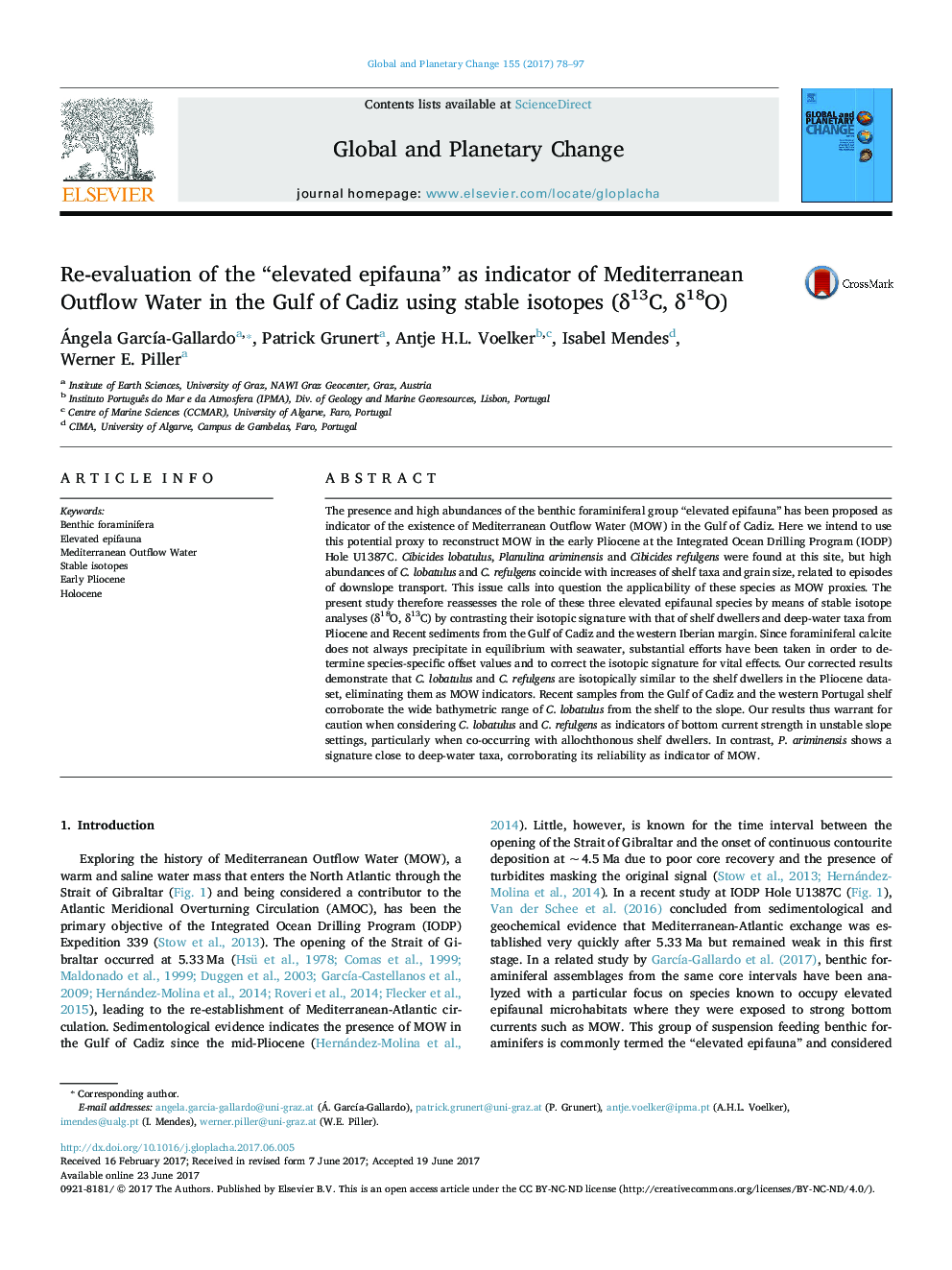| کد مقاله | کد نشریه | سال انتشار | مقاله انگلیسی | نسخه تمام متن |
|---|---|---|---|---|
| 5755255 | 1621627 | 2017 | 20 صفحه PDF | دانلود رایگان |
عنوان انگلیسی مقاله ISI
Re-evaluation of the “elevated epifauna” as indicator of Mediterranean Outflow Water in the Gulf of Cadiz using stable isotopes (δ13C, δ18O)
دانلود مقاله + سفارش ترجمه
دانلود مقاله ISI انگلیسی
رایگان برای ایرانیان
کلمات کلیدی
موضوعات مرتبط
مهندسی و علوم پایه
علوم زمین و سیارات
فرآیندهای سطح زمین
پیش نمایش صفحه اول مقاله

چکیده انگلیسی
The presence and high abundances of the benthic foraminiferal group “elevated epifauna” has been proposed as indicator of the existence of Mediterranean Outflow Water (MOW) in the Gulf of Cadiz. Here we intend to use this potential proxy to reconstruct MOW in the early Pliocene at the Integrated Ocean Drilling Program (IODP) Hole U1387C. Cibicides lobatulus, Planulina ariminensis and Cibicides refulgens were found at this site, but high abundances of C. lobatulus and C. refulgens coincide with increases of shelf taxa and grain size, related to episodes of downslope transport. This issue calls into question the applicability of these species as MOW proxies. The present study therefore reassesses the role of these three elevated epifaunal species by means of stable isotope analyses (δ18O, δ13C) by contrasting their isotopic signature with that of shelf dwellers and deep-water taxa from Pliocene and Recent sediments from the Gulf of Cadiz and the western Iberian margin. Since foraminiferal calcite does not always precipitate in equilibrium with seawater, substantial efforts have been taken in order to determine species-specific offset values and to correct the isotopic signature for vital effects. Our corrected results demonstrate that C. lobatulus and C. refulgens are isotopically similar to the shelf dwellers in the Pliocene data-set, eliminating them as MOW indicators. Recent samples from the Gulf of Cadiz and the western Portugal shelf corroborate the wide bathymetric range of C. lobatulus from the shelf to the slope. Our results thus warrant for caution when considering C. lobatulus and C. refulgens as indicators of bottom current strength in unstable slope settings, particularly when co-occurring with allochthonous shelf dwellers. In contrast, P. ariminensis shows a signature close to deep-water taxa, corroborating its reliability as indicator of MOW.
ناشر
Database: Elsevier - ScienceDirect (ساینس دایرکت)
Journal: Global and Planetary Change - Volume 155, August 2017, Pages 78-97
Journal: Global and Planetary Change - Volume 155, August 2017, Pages 78-97
نویسندگان
Ángela GarcÃa-Gallardo, Patrick Grunert, Antje H.L. Voelker, Isabel Mendes, Werner E. Piller,